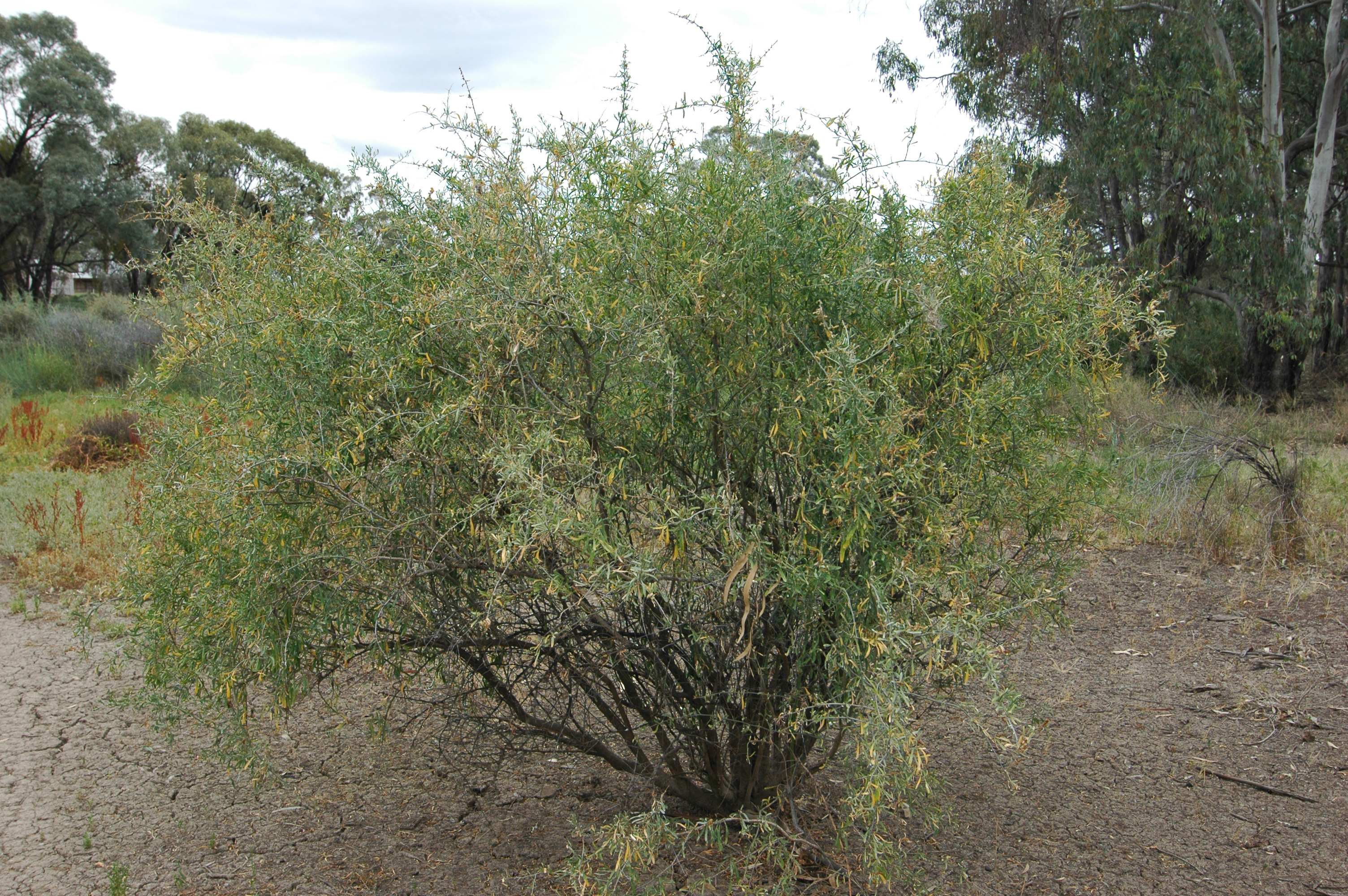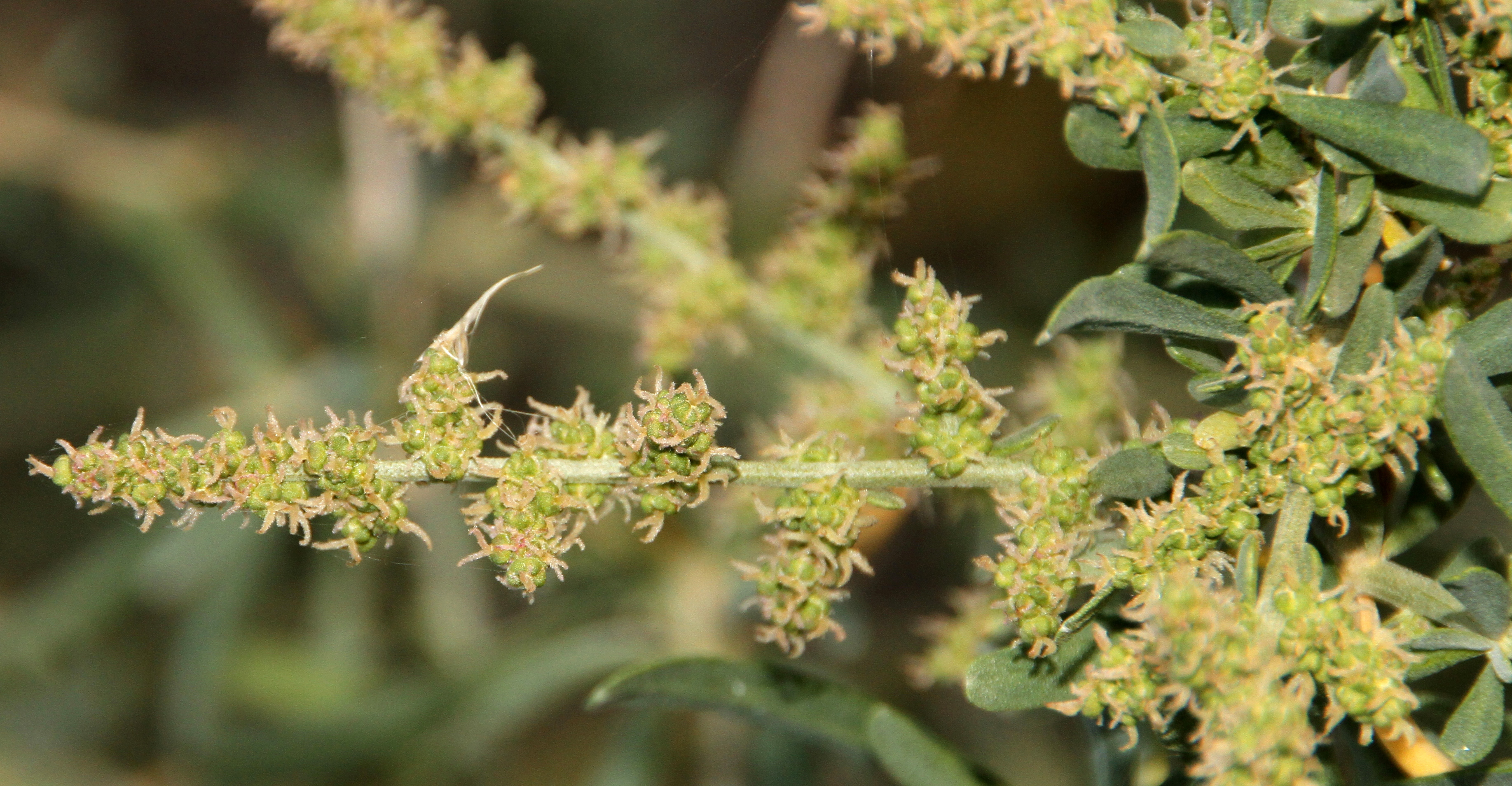

Branching Goosefoot
Chenopodium nitrariaceum
Much-branched spiny shrub to 2 m high and wide, often in hedge-like stands. Oblong thick leaves alternating, without obvious stems up to 30 mm long. Small flowers to 2 mm on panicle to 30 cm.
| Details | |
|---|---|
| Flora Type | Chenopods |
| Other Common Names | Nitre Goosefoot |
| Distinctive Features | Spiny, greyish shrub, with slender branches and thick, green leaves that are not mealy but are lightly powdery on the underneath. Can be the dominant plant over extensive local areas. |
| Biology | Perennial. Occurs on heavy alluvial or clay soils on floodplains, river flats and low lying areas subject to occasional inundation. Tolerant of drought and salinity, and can withstand extended period of complete inundation. |
| Native Status | Native |
| Flowering Time | Mostly Feb-Aug but all year |